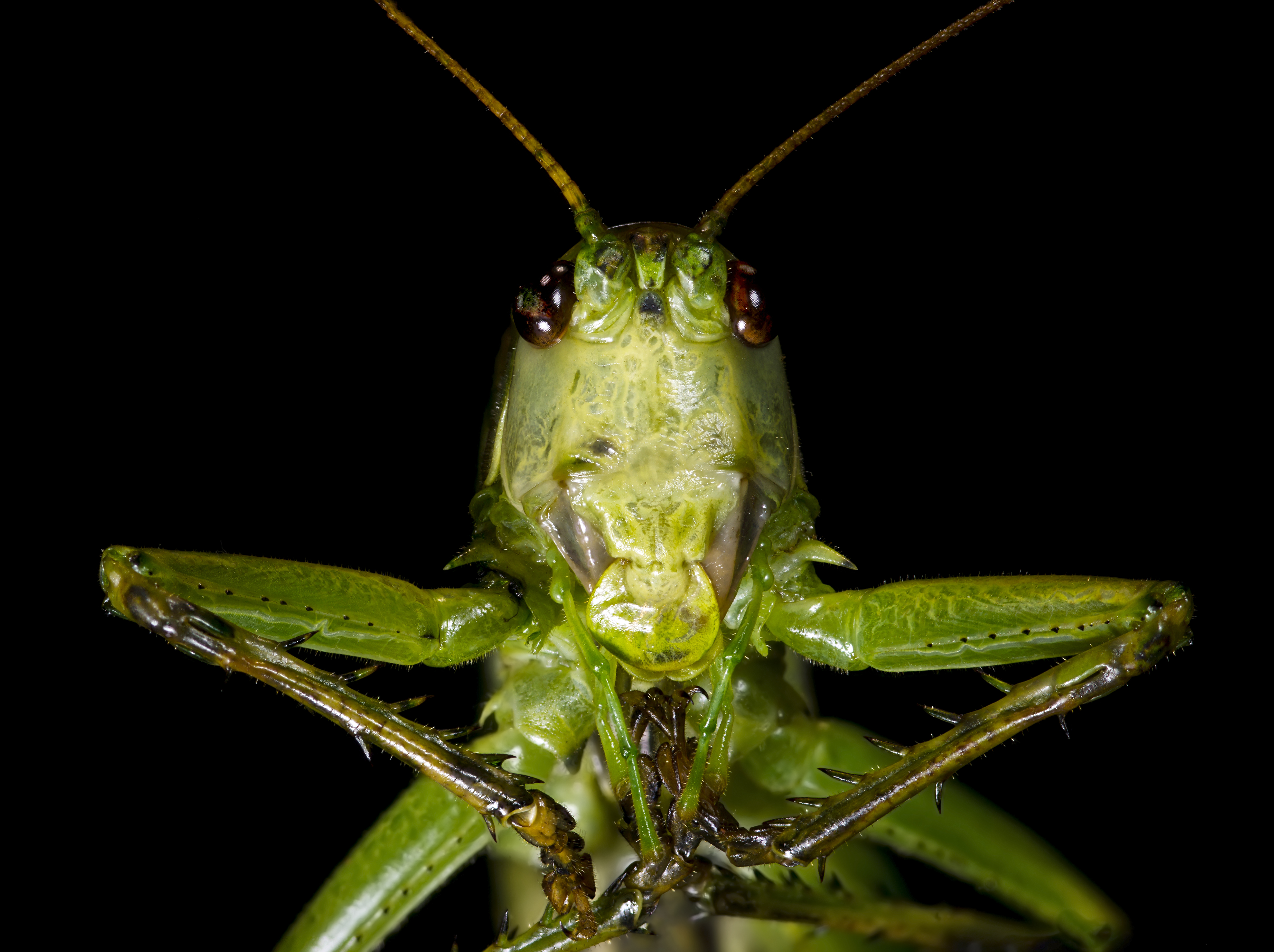|
Neoxizicus
''Neoxizicus'' is a monotypic genus of Asian bush crickets belonging to the tribe Meconematini in the subfamily Meconematinae. It is only found in Vietnam. Species The ''Orthoptera Species File'' currently lists the sole type species: ''Neoxizicus crassus'' Gorochov, 1998: from Tam Dao village, Vinh Phu Province. Note: "''Neoxizicus longipennis''" Liu & Zhang, 2000 from Yunnan, has now been placed in the genus ''Tamdaora ''Tamdaora'' is a genus of Asian bush crickets belonging to the tribe Meconematini in the subfamily Meconematinae. This genus is named after Tam Đảo National Park in northern Vietnam, where the type species was found. They are found in Indo- ...''. species ''Tamdaora longipennis'' (Liu & Zhang, 2000) References {{Taxonbar, from=Q10599044, from2=Q10599043[...More Info...] [...Related Items...] OR: [Wikipedia] [Google] [Baidu] |
Meconematini
Meconematinae is a subfamily of the bush crickets, with a worldwide distribution (but very limited representation in Antarctica and North America). Tribes and genera In the Orthoptera Species File, the following are listed: Meconematini Authority: Burmeister 1838 ;subtribe Acilacridina Authority: Gorochov, 2017 - southern Africa # ''Acilacris'' Bolívar, 1890 includes subgenus ''Aroegas'' Péringuey, 1916 # ''Africariola'' - monotypic: ''Africariola longicauda'' Naskrecki, 1996 # '' Ovonotus'' Naskrecki & Guta, 2019 # '' Paracilacris'' Chopard, 1955 ;subtribe Meconematina distribution: mostly Europe & Asia # '' Alloxiphidiopsis'' Liu & Zhang, 2007 # '' Amyttosa'' Beier, 1965 # '' Borneratura'' Gorochov, 2008 # '' Brachyamytta'' Naskrecki, 2008 # '' Breviratura'' Gorochov, 2008 # '' Caprixizicus'' Gorochov, 2022 # '' Kamerula'' Gorochov, 2017 # ''Leptoteratura'' Yamasaki, 1982 # ''Meconema'' Serville, 1831 - Europe # ''Naskreckia'' Gorochov, 2017 # '' Odonturisca'' ... [...More Info...] [...Related Items...] OR: [Wikipedia] [Google] [Baidu] |
Monotypic Genus
In biology, a monotypic taxon is a taxonomic group (taxon) that contains only one immediately subordinate taxon. A monotypic species is one that does not include subspecies or smaller, infraspecific taxa. In the case of genera, the term "unispecific" or "monospecific" is sometimes preferred. In botanical nomenclature, a monotypic genus is a genus in the special case where a genus and a single species are simultaneously described. In contrast, an oligotypic taxon contains more than one but only a very few subordinate taxa. Examples Just as the term ''monotypic'' is used to describe a taxon including only one subdivision, the contained taxon can also be referred to as monotypic within the higher-level taxon, e.g. a genus monotypic within a family. Some examples of monotypic groups are: Plants * In the order Amborellales, there is only one family, Amborellaceae and there is only one genus, '' Amborella'', and in this genus there is only one species, namely ''Amborella trichopoda.' ... [...More Info...] [...Related Items...] OR: [Wikipedia] [Google] [Baidu] |
Tettigoniidae
Insects in the family Tettigoniidae are commonly called katydids (especially in North America), or bush crickets. They have previously been known as "long-horned grasshoppers". More than 8,000 species are known. Part of the suborder Ensifera, the Tettigoniidae are the only extant (living) family in the superfamily Tettigonioidea. They are primarily nocturnal in habit with strident mating calls. Many species exhibit mimicry and camouflage, commonly with shapes and colors similar to leaves. Etymology The family name Tettigoniidae is derived from the genus '' Tettigonia'', first described by Carl Linnaeus in 1758. In Latin ''tettigonia'' means a kind of small cicada, leafhopper; it is from the Greek τεττιγόνιον ''tettigonion'', the diminutive of the imitative ( onomatopoeic) τέττιξ, ''tettix'', cicada. All of these names such as ''tettix'' with repeated sounds are onomatopoeic, imitating the stridulation of these insects. The common name ''katydid'' is also on ... [...More Info...] [...Related Items...] OR: [Wikipedia] [Google] [Baidu] |
Type Species
In zoological nomenclature, a type species (''species typica'') is the species name with which the name of a genus or subgenus is considered to be permanently taxonomically associated, i.e., the species that contains the biological type specimen(s). Article 67.1 A similar concept is used for suprageneric groups and called a type genus. In botanical nomenclature, these terms have no formal standing under the code of nomenclature, but are sometimes borrowed from zoological nomenclature. In botany, the type of a genus name is a specimen (or, rarely, an illustration) which is also the type of a species name. The species name that has that type can also be referred to as the type of the genus name. Names of genus and family ranks, the various subdivisions of those ranks, and some higher-rank names based on genus names, have such types. [...More Info...] [...Related Items...] OR: [Wikipedia] [Google] [Baidu] |
Vinh Phu Province
Vinh () is the biggest city and economic and cultural center of North Central Coast, north-central Vietnam. Vinh is the capital of Nghệ An Province, and is a key point in the East–West economic corridor linking Myanmar, Thailand, Laos and Vietnam. The city is situated in the south-east of the province, alongside the Cả River, Lam River (Song Lam) and is located on the main north–south transportation route of Vietnam, easily accessible by highway, railroad, boat and air. The recently expanded Vinh International Airport is served daily by four carriers: Vietnam Airlines, VietJet Air, Bamboo Airways and Jetstar Pacific. On September 5, 2008, it was upgraded from Grade-II city to Grade-I city, the fifth Grade-I city of Vietnam after Hai Phong, Haiphong, Da Nang, Đà Nẵng and Huế. Vinh is the most populous city in the North Central Coastal region, with over 490,000 residents (2015 estimate). The city is bordered by Nghi Loc district to the north and east, Hung Nguyen distr ... [...More Info...] [...Related Items...] OR: [Wikipedia] [Google] [Baidu] |
Tamdaora
''Tamdaora'' is a genus of Asian bush crickets belonging to the tribe Meconematini in the subfamily Meconematinae. This genus is named after Tam Đảo National Park in northern Vietnam, where the type species was found. They are found in Indo-China and China. Species , ''Orthoptera Species File'' lists the following species: # '' Tamdaora curvicerca'' Wang & Liu, 2018 - Zayü County, Arunachal Pradesh # '' Tamdaora longipennis'' (Liu & Zhang, 2000) - Menglong Mengsong, Yunnan Yunnan , () is a landlocked Provinces of China, province in Southwest China, the southwest of the People's Republic of China. The province spans approximately and has a population of 48.3 million (as of 2018). The capital of the province is ... # '' Tamdaora magnifica'' Gorochov, 1998 – type species, locality: near Tam Dao village, Vinh Phu Province, Vietnam References External linksImage at iNaturalist* {{Taxonbar, from=Q14449579 Tettigoniidae genera Meconematinae Orthoptera of Asia ... [...More Info...] [...Related Items...] OR: [Wikipedia] [Google] [Baidu] |
Tettigoniidae Genera
Insects in the family Tettigoniidae are commonly called katydids (especially in North America), or bush crickets. They have previously been known as "long-horned grasshoppers". More than 8,000 species are known. Part of the suborder Ensifera, the Tettigoniidae are the only extant (living) family in the superfamily Tettigonioidea. They are primarily nocturnal in habit with strident mating calls. Many species exhibit mimicry and camouflage, commonly with shapes and colors similar to leaves. Etymology The family name Tettigoniidae is derived from the genus ''Tettigonia'', first described by Carl Linnaeus in 1758. In Latin ''tettigonia'' means a kind of small cicada, leafhopper; it is from the Greek τεττιγόνιον ''tettigonion'', the diminutive of the imitative (onomatopoeic) τέττιξ, ''tettix'', cicada. All of these names such as ''tettix'' with repeated sounds are onomatopoeic, imitating the stridulation of these insects. The common name ''katydid'' is also onomatop ... [...More Info...] [...Related Items...] OR: [Wikipedia] [Google] [Baidu] |
Orthoptera Of Asia
Orthoptera () is an order of insects that comprises the grasshoppers, locusts, and crickets, including closely related insects, such as the bush crickets or katydids and wētā. The order is subdivided into two suborders: Caelifera – grasshoppers, locusts, and close relatives; and Ensifera – crickets and close relatives. More than 20,000 species are distributed worldwide. The insects in the order have incomplete metamorphosis, and produce sound (known as a "stridulation") by rubbing their wings against each other or their legs, the wings or legs containing rows of corrugated bumps. The tympanum, or ear, is located in the front tibia in crickets, mole crickets, and bush crickets or katydids, and on the first abdominal segment in the grasshoppers and locusts. These organisms use vibrations to locate other individuals. Grasshoppers and other orthopterans are able to fold their wings (i.e. they are members of Neoptera). Etymology The name is derived from the Greek ὀρθός ... [...More Info...] [...Related Items...] OR: [Wikipedia] [Google] [Baidu] |
.jpg)

_(2).jpg)


